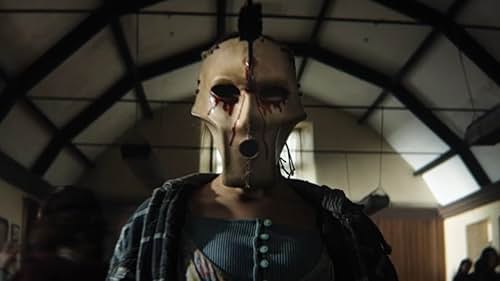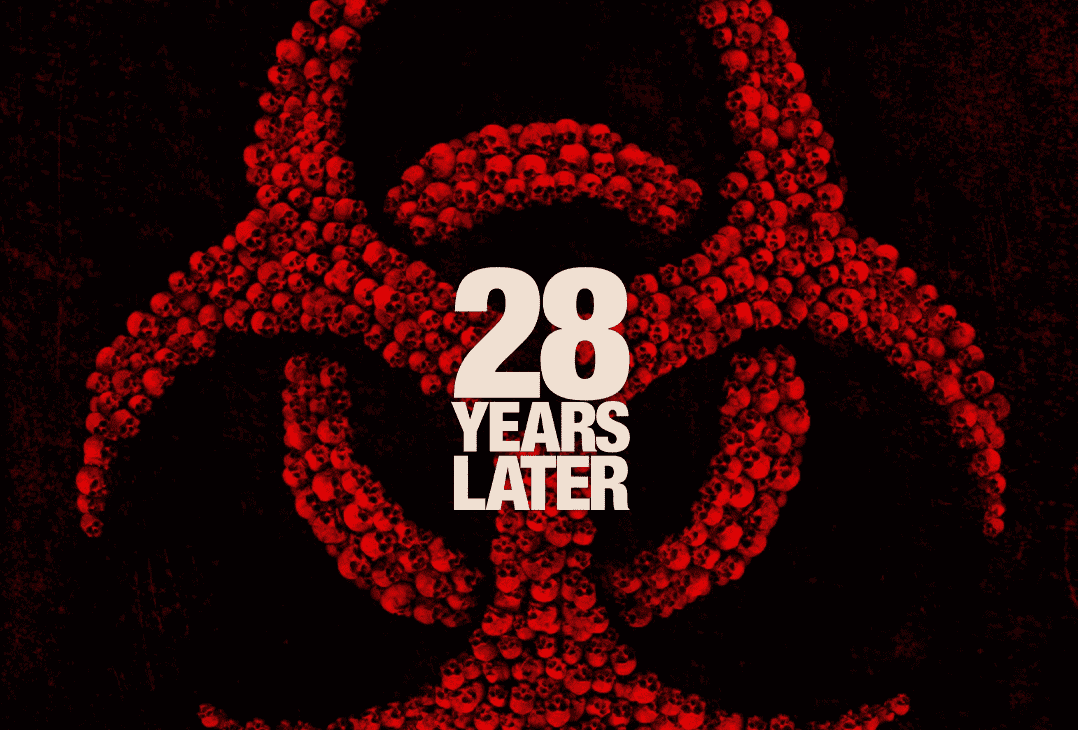Get ready for a terrifying return to the post-apocalyptic world of rage-infected zombies. “28 Years Later,” the highly anticipated third installment in the iconic horror franchise, arrives in theaters on June 20, 2025, nearly three decades after the original film revolutionized the zombie genre. This sequel reunites Oscar-winning director Danny Boyle with Oscar-nominated writer Alex Garland, bringing back the creative team that made the original 2002 film such a groundbreaking success.
The film features an impressive cast including Jodie Comer, Aaron Taylor-Johnson, and Ralph Fiennes as survivors who have found ways to exist amid the infected in a world still under ruthless quarantine. Set almost 30 years after the rage virus escaped from a biological weapons laboratory, the story explores how humanity has adapted to life in this altered reality where the infected still pose a constant threat.
This sequel marks a significant return to the franchise after a long hiatus following 2007’s “28 Weeks Later.” With original cinematographer Anthony Dod Mantle also returning, fans can expect the same visceral, tension-filled experience that made the first film so impactful, while exploring new territory as characters navigate a world forever changed by the rage virus.
What We Know So Far About 28 Years Later
The wait is nearly over. After two decades of speculation, false starts, and fan petitions, Danny Boyle and Alex Garland are finally reuniting for a proper follow-up to the genre-defining 28 Days Later. Set to hit theaters on June 20, 2025, 28 Years Later isn’t just a nostalgic cash-in—it’s the start of a bold new trilogy set in the same brutal, virus-ravaged universe.

Boyle returns to the director’s chair for the first installment, with Garland once again penning the script. That pairing alone is enough to raise eyebrows. The last time these two collaborated on a zombie film, they redefined the genre. But the stakes are higher this time. The scope is bigger. And from the early details, it’s clear they’re aiming to evolve the story rather than just recycle it.
Cast, Setting, and Story Details
The cast brings some serious dramatic weight. Jodie Comer plays Isla, a hardened survivor who has carved out a fragile existence on an isolated island safe zone. Aaron Taylor-Johnson co-stars as Jamie, a young man determined to uncover the truth about the mainland, accompanied by his estranged father. Ralph Fiennes rounds out the core cast as Dr. Kelson, a scientist whose moral compass may be more dangerous than the virus itself.
The film picks up 28 years after the Rage virus first tore through Britain. Society has collapsed and reshaped itself into scattered enclaves—some militarized, others spiritual, all paranoid. The new protagonists set off from their relatively stable island home to explore what’s left of the mainland, only to discover that the horrors of the past haven’t just survived—they’ve evolved. What was once a virus that sparked animalistic fury now appears to be mutating, perhaps even becoming something new.
The Cinematic Experiment
One of the wildest twists? The entire movie was reportedly shot on an iPhone 15 Pro Max, despite having a massive studio budget. That decision isn’t just a gimmick. Boyle, always an innovator, wanted to lean into the raw, lo-fi aesthetic that gave 28 Days Later its unforgettable grit. Early footage shown in the first trailer—released in December 2024—has stunned audiences with how cinematic the phone-shot visuals look. It’s a return to chaos, but refined and upgraded for a modern audience.
Plans for a Full Trilogy
28 Years Later is only the beginning. A second installment is already in the pipeline with a scheduled release date of January 16, 2026. Tentatively titled 28 Years Later: The Bone Temple, the sequel is expected to expand the scope beyond the UK and delve deeper into the global response to the Rage virus. Nia DaCosta is reportedly in talks to direct the follow-up, which would bring a new visual and thematic perspective to the story.
And yes, the original cast might still return—at least in some form. Rumors continue to swirl that Cillian Murphy, who starred as Jim in the first film, could have a cameo or even a more substantial role in the trilogy’s arc. Given Garland’s interest in continuity and psychological depth, the idea of confronting the ghosts of the first outbreak could add a powerful emotional layer.
The New Era of Infection Horror
This isn’t your standard zombie apocalypse. The Rage virus has always stood apart for its sheer intensity. It doesn’t reanimate the dead—it turns the living into weapons. What 28 Years Later seems to be exploring is what happens when generations grow up with that constant threat, when myths and memories of the first outbreak begin to blur into legend. It’s less about surviving one outbreak and more about enduring in a world that never fully recovered.
As studios pump out zombie content by the bucketload, Boyle and Garland’s return feels like a course correction—a reminder that the genre can still have teeth. The fact that the trailer became one of the most-watched horror trailers ever suggests fans are more than ready.
28 Years Later is shaping up to be more than just a sequel. It’s a resurrection of smart, socially conscious, and viscerally terrifying horror. And if the trilogy lands as planned, it could be the definitive closing chapter on one of the most influential horror sagas of the 21st century.
Key Takeaways
- “28 Years Later” releases June 20, 2025, reuniting the original creative team of Danny Boyle and Alex Garland after a 23-year franchise hiatus.
- The star-studded cast includes Jodie Comer, Aaron Taylor-Johnson, and Ralph Fiennes as survivors in a world still under quarantine.
- The film explores how humanity has adapted to living alongside the infected nearly three decades after the initial outbreak.
Background and Context
The 28 Days Later franchise established itself as a groundbreaking force in post-apocalyptic horror cinema. Its unique take on infected humans rather than traditional zombies created a terrifying vision that has influenced horror films for over two decades.
Origins of the 28 Days Later Franchise
The franchise began in 2002 with Danny Boyle directing and Alex Garland writing the original film. 28 Days Later starred Cillian Murphy as Jim, a bicycle courier who wakes from a coma to find London decimated by the highly contagious Rage virus. This film revolutionized zombie cinema by introducing fast-moving infected rather than slow, shuffling undead.
The movie’s distinctive visual style came partly from being filmed on digital video, giving it a gritty, immediate feel. With its £8 million budget, it became a surprise hit, grossing over $82 million worldwide.
Critical acclaim followed for its social commentary and reinvention of horror tropes. The success led to a sequel, 28 Weeks Later (2007), directed by Juan Carlos Fresnadillo, which explored the attempted recolonization of Britain after the initial outbreak.
Development of the Sequel ’28 Years Later’
After years of speculation about a third installment, 28 Years Later was officially announced with Danny Boyle returning to direct. Alex Garland, who wrote the original film, returned to pen the screenplay, maintaining creative continuity within the trilogy.
The project gathered momentum when Jodie Comer, Aaron Taylor-Johnson, and Ralph Fiennes joined the cast. Sony Pictures secured distribution rights with a planned June 20, 2025 release date.
Producer Andrew Macdonald, who worked on the original film, returned to help shepherd this long-awaited sequel. The film is reportedly the first in a new planned trilogy, indicating studio confidence in reviving the franchise.
Boyle and Garland intend to expand the mythology of the Rage virus while exploring how survivors have adapted in the decades since the original outbreak. The significant time jump allows for exploration of how society might rebuild after a near-extinction event.
Key Production Details
The development of “28 Years Later” marks a significant milestone for the zombie franchise, with several original creators returning alongside new talent to bring this anticipated sequel to life.
Casting Choices
Jodie Comer leads the cast, bringing her acclaimed acting skills to the zombie apocalypse genre. She’s joined by Aaron Taylor-Johnson, who has established himself in action films like “Bullet Train” and “Kick-Ass.”
Ralph Fiennes rounds out the main cast, bringing his considerable gravitas to the project. In recent interviews, Fiennes revealed some plot details about his character, though specifics remain carefully guarded.
Jack O’Connell and newcomer Alfie Williams also join the ensemble, creating a diverse cast that blends established stars with fresh talent. The casting choices suggest a focus on strong character development alongside the expected horror elements.
Creative Team
Danny Boyle returns to direct the film, marking his first return to the franchise since the original “28 Days Later” in 2002. This reunion has generated significant excitement among fans.
Original screenwriter Alex Garland has also returned to pen the script. Garland, who has since directed acclaimed sci-fi films like “Ex Machina,” brings his unique storytelling sensibilities back to the series.
Anthony Dod Mantle, the cinematographer from the first film, completes the returning creative trio. The film is being produced by DNA Films with distribution by Sony Pictures and Columbia Pictures.
Nia DaCosta joins as executive producer, adding her horror expertise following her work on the “Candyman” reboot. The film is scheduled to premiere on June 20, 2025, with a possible early screening at the Edinburgh International Film Festival.
Plot and Setting
“28 Years Later” takes place in a transformed United Kingdom ravaged by the rage virus. The film explores how survivors have adapted to a world where infected still roam, while introducing new threats and mysteries that have evolved over nearly three decades of apocalyptic conditions.
Storyline Overview
The film follows a group of survivors who have established a relatively safe community on a small island off the British coast. This isolation has protected them from the mainland’s horrors for years. Their security is disrupted when one member leaves their sanctuary on a crucial mission to the mainland.
What begins as a straightforward expedition quickly becomes complicated. The character discovers that both the infected and other survivors have changed in unexpected ways. The rage virus has mutated, creating new threats that the isolated community never anticipated.
The story reportedly centers on revelations about the mainland that challenge everything the survivors believed about their world. These discoveries force them to confront both external dangers and internal conflicts within their group.
Introducing New Elements
“28 Years Later” brings several new concepts to the franchise. Director Danny Boyle and writer Alex Garland have created what they call “The Bone Temple,” a mysterious location central to the plot. This structure reportedly represents how humanity has adapted to living alongside infection.
The infected themselves have evolved. Unlike the fast-moving, mindlessly violent carriers from the earlier films, these infected display new behaviors and capabilities. Some rumors suggest certain infected have developed rudimentary intelligence or pack behaviors.
The film also explores a civil war between different survivor factions. These groups have developed distinct ideologies about how to rebuild society in a post-apocalyptic world. This conflict adds a human element to the horror, showing that sometimes other survivors can be more dangerous than the infected.
Key Locations
The small island sanctuary serves as the story’s starting point. Protected by a heavily-defended causeway, it represents humanity’s last organized stand against the infection. The island community has developed unique customs and rules for survival over decades of isolation.
When the story moves to mainland Britain, we see regions like Northumberland and Yorkshire that have transformed into unrecognizable landscapes. Reports indicate Fountains Abbey appears as a key location, repurposed by survivors as a fortress.
The mysterious “Bone Temple” appears to be located deep within infected territory. Set pieces filmed at this location reportedly showcase elaborate structures built by either evolved infected or desperate survivors.
Urban environments have been reclaimed by nature, with once-bustling cities now serving as hunting grounds for the infected. These decayed cityscapes provide a stark visual contrast to the relative order of the island community.
Cinematic Techniques and Special Effects
The upcoming film “28 Years Later” builds on the revolutionary visual style of its predecessors while implementing cutting-edge technology to deliver a more immersive horror experience.
Visual Effects and Cinematography
Danny Boyle, returning to direct, is expected to maintain his signature frenetic camerawork that defined the original film. Early trailer footage shows he’s preserving the shaky, documentary-style filming techniques that create a sense of urgency and realism.
The film appears to employ a mix of practical effects and CGI to depict the infected. Makeup artists have developed more advanced techniques to showcase how the Rage virus has evolved over 28 years, with infected individuals displaying new physical symptoms.
Cinematographer Anthony Dod Mantle, who worked on the original film, returns to create the distinctive visual palette. The color grading shows a stark contrast between safe zones and infected territories, using warmer tones for survivor communities and cold, desaturated blues for post-apocalyptic landscapes.
Sound Design and Score
John Murphy’s iconic theme “In the House – In a Heartbeat” makes a dramatic return in the trailer, suggesting the score will blend nostalgic elements with new compositions to reflect the evolved state of the post-apocalyptic world.
Sound designers have created new audio profiles for the infected, with early reports indicating more complex vocalizations that suggest the virus has mutated. The soundscape emphasizes biological horror through visceral audio effects.
Spatial audio technology enhances the terror by precisely locating infected attackers in the sound field. This technique creates a more immersive experience, especially in theater settings with advanced sound systems.
The film utilizes strategic silence followed by explosive sound to maximize jump scares, a technique that proved effective in creating tension in the original films.
Themes and Interpretations
The upcoming zombie thriller “28 Years Later” explores deep societal and philosophical questions through its post-apocalyptic setting. The film’s narrative delves into what happens when civilization must rebuild after nearly three decades of living with the deadly rage virus.
Survival and Humanity
“28 Years Later” examines how humanity adapts to catastrophic circumstances over an extended period. Unlike the immediate chaos of the original film, this sequel shows a world that has established new social orders and survival mechanisms after living with the infected for 28 years.
Ralph Fiennes revealed that the world has “come to terms with the zombies” and “learned to live with them.” This uneasy coexistence raises questions about what remains of humanity when people must constantly live alongside deadly threats.
The film appears to explore how survivors maintain their humanity in a world where violence has become normalized. Characters likely face moral dilemmas about sacrificing others for the greater good—a recurring theme in post-apocalyptic narratives.
Parallels to Real-World Events
The “28” franchise has consistently used its zombie outbreak as an allegory for real-world crises. This latest installment seems to examine how societies restructure after catastrophic events, similar to post-war rebuilding or pandemic recovery.
The rage virus, originally portrayed as a biological weapon gone wrong, continues to serve as a metaphor for human-made disasters. Reports suggest the film may touch on themes of containment, quarantine protocols, and the long-term consequences of biological warfare.
The stable but fragile world portrayed in “28 Years Later” likely reflects contemporary anxieties about civil unrest and societal collapse. The NATO-like organized response hinted at in promotional materials suggests an exploration of how international alliances function during prolonged crises.
The mystery surrounding how the world adapted to living with the infected serves as a canvas for examining humanity’s resilience and capacity for both cooperation and conflict when faced with existential threats.
Marketing and Release
The marketing campaign for “28 Years Later” began building momentum in early 2025, with Sony Pictures and Columbia Pictures collaborating on a strategic rollout ahead of the June 20, 2025 release date.
Promotional Campaign
The first teaser trailer for “28 Years Later” dropped in January 2025, featuring haunting glimpses of the evolved infected and the isolated survivor community. The 90-second clip quickly went viral, generating over 50 million views in its first week.
Sony Pictures released a full trailer in March 2025, showcasing the star power of Jodie Comer, Aaron Taylor-Johnson, and Ralph Fiennes while revealing more of the plot without spoiling major twists. The trailer drew comparisons to the marketing approach used for “Oppenheimer,” focusing on the emotional and psychological horror rather than just jump scares.
Limited-edition posters appeared in major cities worldwide, featuring the iconic infected eye imagery reimagined for the new film. A clever social media campaign included “found footage” videos and interactive survival guides that expanded the film’s universe.
Box Office and Reception
Industry analysts project “28 Years Later” to potentially outperform both its predecessors at the box office, with opening weekend estimates ranging between $60-75 million domestically. The film faces competition from several summer blockbusters but benefits from strong nostalgia for the original films.
Early tracking suggests particularly strong interest among both horror fans and general audiences who remember the original films. The R-rating hasn’t dampened excitement, with pre-sale tickets becoming available three months ahead of release.
Streaming rights negotiations are reportedly underway, with Prime Video emerging as a frontrunner for post-theatrical distribution. Unlike “The Marvels,” which struggled with audience fatigue, the long gap between “28 Years Later” and previous installments has created genuine anticipation rather than sequel exhaustion.
Critics will receive early screenings approximately two weeks before the wide release, with a social media embargo in place until June 10, 2025.
Connections to Other Media
The “28” series has profoundly shaped zombie media and horror filmmaking since the original film’s release in 2002. Its fast-moving infected and realistic approach to apocalyptic scenarios created a new template for the genre.
Influence on the Horror Genre
The original “28 Days Later” revolutionized zombie cinema by introducing the “fast zombie” concept that departed from George Romero’s shambling undead. This innovation directly influenced subsequent works like “World War Z” and “The Walking Dead,” which borrowed elements of the panic-inducing sprinting infected.
Director Danny Boyle’s gritty documentary-style filming technique established a visual language for modern horror. The rage virus concept specifically inspired other biological horror stories, offering a scientifically plausible alternative to supernatural zombie origins.
The series’ focus on human drama amid catastrophe also elevated zombie stories from pure horror to social commentary. Many critics credit “28 Days Later” with helping legitimize horror as a vehicle for serious filmmaking.
Potential for Future Installments
“28 Years Later” is reportedly the first entry in a planned new trilogy. Sony Pictures has already scheduled rapid production for the subsequent films, with the second installment expected shortly after the June 2025 release.
This ambitious trilogy approach mirrors successful horror franchises like the recent “Halloween” revival. The involvement of original creators Boyle and Garland suggests a cohesive vision rather than diminishing returns common in horror sequels.
Danny Boyle has hinted that the new films will explore how the rage virus has evolved over decades. The long time gap between “28 Weeks Later” and this new installment allows for creative exploration of how both the infected and survivors have adapted.
Industry insiders suggest the trilogy might expand beyond Britain to show the global impact of the rage virus.
Viewer Engagement
Anticipation for “28 Years Later” has sparked significant online activity months before its June 2025 release. Fans of the original films have been analyzing trailer footage and sharing theories about how the story might unfold in this post-apocalyptic world.
Fan Theories and Speculations
Viewers have developed numerous theories about the upcoming film’s plot, particularly regarding the evolution of the Rage virus after 28 years. Many speculate that Aaron Taylor-Johnson’s character might be a grown-up version of a child survivor from previous outbreaks.
Others theorize that Ralph Fiennes may portray a scientist from a biological weapons laboratory responsible for either creating a cure or weaponizing the infection further. Some fans believe Jodie Comer’s character holds important secrets about immunity to the virus.
The trailer’s glimpses of seemingly organized infected individuals has led to theories about evolved intelligence in the infected population. This represents a potentially terrifying new dimension to the horror elements that made the original films so impactful.
Online Discussions and Reviews
Social media platforms have become hubs for “28 Years Later” discussions, with dedicated subreddits analyzing every frame of promotional material. Horror film communities are particularly active in debating how this sequel will honor its predecessors while bringing fresh elements to the franchise.
Film review sites have published numerous anticipatory articles examining the potential quality of the production based on the talent involved. Director Danny Boyle’s return to the franchise has generated particular excitement among horror enthusiasts.
Many discussions focus on the post-apocalyptic setting and how society might have adapted or failed to adapt nearly three decades after the initial outbreak. Comparisons to other zombie franchises frequently appear in these conversations, with fans noting the distinctive “fast zombie” approach of the “28” series.
Expert commentary from sites like Collider has helped frame expectations about the film’s place in modern horror cinema. Industry insiders predict the film could revitalize interest in serious zombie narratives after years of genre saturation.
Frequently Asked Questions
Fans have many questions about the upcoming zombie horror film “28 Years Later,” from its cast to its connections with previous films in the series. These FAQs address the most common inquiries about this highly anticipated sequel.
Who are the lead actors in the film ’28 Years Later’?
The lead cast of “28 Years Later” features Jodie Comer, Aaron Taylor-Johnson, and Ralph Fiennes. This trio of acclaimed actors brings significant star power to the third installment in the franchise.
Ralph Fiennes recently revealed some plot details about his character, though specific role information remains limited. The film marks a return to the franchise for director Danny Boyle, who helmed the original “28 Days Later.”
What is the official release date for ’28 Years Later’?
“28 Years Later” is scheduled for theatrical release on June 20, 2025. The film has been in development for several years, with fans of the original films eagerly awaiting this continuation of the story.
The summer release date positions the film as a major horror offering for the 2025 movie season. This date was confirmed in official announcements from the production team.
How does ’28 Years Later’ connect to its predecessors?
“28 Years Later” is the third film in the series that began with “28 Days Later” (2002) and continued with “28 Weeks Later” (2007). The film takes place, as the title suggests, 28 years after the initial outbreak of the Rage virus.
According to reports, the story involves survivors in Britain who have adapted to life in a post-apocalyptic environment. Danny Boyle’s return to direct, along with original writer Alex Garland and cinematographer Anthony Dod Mantle, suggests a creative continuity with the first film.
Can ’28 Years Later’ be watched independently of the earlier films?
While “28 Years Later” continues the established storyline, it will likely be accessible to newcomers unfamiliar with the previous films. Most sequels with significant time gaps tend to provide context for new viewers.
For the complete experience, however, watching “28 Days Later” and “28 Weeks Later” is recommended. Both previous films are currently available on streaming platforms as of January 2025, making it convenient to catch up before the new release.
What are the critical reception and ratings for ’28 Years Later’?
As “28 Years Later” has not yet been released, there are no critical reviews or ratings available. The film is still in production for its June 2025 release.
The previous films received positive reviews, with “28 Days Later” particularly praised for reinvigorating the zombie genre. Expectations are high given the return of the original creative team and the strong cast assembled for this sequel.
Where is ’28 Years Later’ available for streaming or purchase?
“28 Years Later” will first be released exclusively in theaters on June 20, 2025. Information about streaming or digital purchase options will likely be announced closer to or after the theatrical release.
The previous films, “28 Days Later” and “28 Weeks Later,” are currently available on streaming platforms. This availability gives fans and new viewers the opportunity to experience the earlier installments before seeing the new film.







